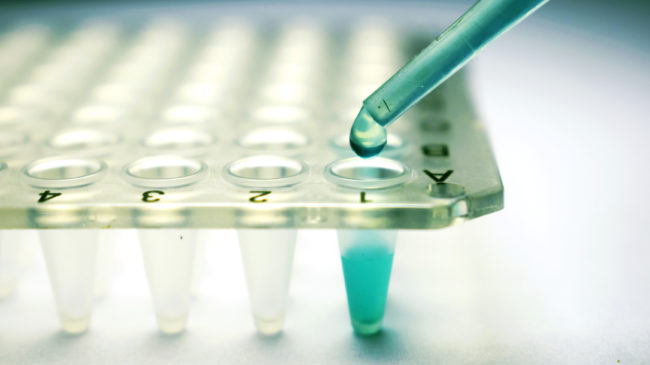California Proposition 14: Stem Cell Research Institute Bond Initiative
Summary
California’s Proposition 14 would authorize $5.5 billion in state general obligation bonds to fund grants from the California Institute of Regenerative Medicine (CIRM) to educational, non-profit, and private entities for stem cell and other medical research, therapy development, therapy delivery, medical training; and construction of research facilities.
Fiscal Impact
The state would incur costs of $7.8 billion to pay off the combined principal ($5.5 billion) and interest ($2.3 billion) on the bonds. This would equal associated average annual debt payments of about $310 million for 25 years.
Proponents’ Argument For
Supporters argue that a vote for Proposition 14 is a vote to advance groundbreaking medical discoveries of more life-saving treatments and cures. They say that without Proposition 14, these cures that are at our fingertips would be delayed for years, vital research would discontinue and groundbreaking medical discoveries won’t be able to progress to clinical trials. Furthermore, ongoing CIRM-funded studies and clinical trials would be canceled, valuable medical resources currently developed for these studies and clinical trials could be thrown away, and years of progress could be lost. They say that the cost of caring for chronic disease to the state of California is projected to be $4.7 trillion over the 15-year period and stem cell research is an affordable way to lower these costs.
Opponents’ Argument Against
Opponents argue that especially in times of fiscal distress, like the pandemic and recession California—and the country— is currently experiencing, it is inappropriate to prioritize stem cell debt service over other programs and areas, like education and MediCal. Furthermore, they say Prop. 14’s proponents’ hyping of stem cell research could encourage more people to visit commercial stem cell clinics that are offering unproven and dangerous treatments. Not only does Prop. 14 fail to address the conflicts of interest and lack of legislative oversight that already afflict CIRM, but it makes matters worse by outsourcing decisions about medical ethics, they argue.
Discussion
In 2004, voters approved the formation of a new California Institute for Regenerative Medicine (CIRM), funded with $3 billion of bond proceeds that are still being paid for by the general fund. Having used up it’s initial funding on grants and operating costs, CIRM is now asking voters to approve a new $5.5 billion bond.
There are some important differences between the situation now and in 2004. At that time, the George W. Bush administration had limited federal funding for embryonic stem cell research as part of its overall anti-abortion stance. The original California measure was, in part, a rebuke to the federal prohibitions implemented by the Bush administration. But this federal barrier no longer exists.
President Barack Obama reversed Bush’s policy and while the Trump administration has limited research on fetal tissue, it did not bring back restrictions on stem cell research.
Additionally, Japanese scientists developed a technique for reprogramming adult stem cells to act like embryonic stem cells, rendering any future ban largely inconsequential as a barrier to future research.
With federal funding and extensive private funding available, it is not clear that the state has a role in supporting this research at this time and its grant funds may prove to be redundant.
Back in 2004 when voters approved state funding for stem cell research, they only knew of the potential benefits of the studies. Sixteen years and $3 billion later, the miracle cures have yet to materialize. Indeed, a 2018 San Francisco Chronicle investigation found that CIRM funding had yet to produce a federally-approved therapy. As the Chronicle reported:
CIRM has funded nearly 50 clinical trials, but just four have been completed, meaning scientists enrolled all the patients they said they would and finished compiling data. One of those trials was an observational study that tested no new therapy. The others involved treatments that are still years, at best, from reaching the market. The state, once told to expect as much as $1.1 billion in royalties from CIRM-backed discoveries within 35 years, so far has received just a tiny fraction of that amount…
Although CIRM has funded useful and commercially promising research, voters should now recognize that the road to miracle cures from stem cell bond funding is likely to be an exceptionally long one.
Meanwhile, California has entered a steep downturn prompted by the pandemic and recession which has been estimated by Gov. Gavin Newsom’s administration to reduce state revenues by $54 billion. Consequently, there is a lot of competition for general fund revenues, and stem cell debt service could crowd out other priorities.
Indeed, funding medical research through bonds can be seen as a form of budgetary malpractice. Most U.S. states have avoided bond defaults over the last century by limiting borrowing to capital purposes only. While bridges and tunnels that will be in service for decades are viable candidates for debt financing, research grants—just like employee compensation and school funding—should be paid out of current revenues. If the state really wants to be in the stem cell research business, it can avoid the estimated $2.3 billion of interest payments that would result from Prop. 14 by appropriating money for grants annually as part of the budget process.
Further, as former CIRM Board Member Jeff Sheehy noted, the state is still paying off the bonds authorized in 2004. Thus, during the 2020s, the general fund would be paying over $600 million annually for stem cell research. Sheehy stepped off CIRM’s board after casting the single opposing vote to a resolution supporting Proposition 14.
This year’s stem cell ballot measure seems to double down on a solution to a problem that no longer exists (i.e., the Bush-era restrictions on stem cell research), prolonging the life of a bureaucracy that has produced dubious results.

